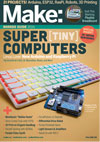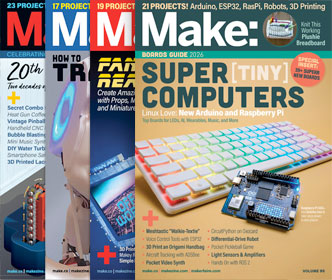
Join Make: Community Today
This project is composed of three segments: the LED array, the simple circuit, and the lamp body. This is a good project to learn about wiring LEDs in series without resistors. The simple circuit, which combines the venerable 555 Timer with a Darlington array, will introduce you to the principle of Pulse Width Modulation. As for the lamp body, that’s where your maker chops come in! Charles used PVC components purchased from plumbing and hardware stores to build his minimalist desk lamp. You are free to follow this design, or customize your own to suit your space and needs. Some modifications that come to mind include a gooseneck, using clear plexi so all the wiring and components are visible, or rewiring the circuit to be battery powered for true portability. The possibilities are endless!

More:
See all of the Weekend Projects posts
8 thoughts on “Build a Bright, Low-Power Little Big Lamp This Weekend”
Comments are closed.
ADVERTISEMENT
Join Make: Community Today











Why are you drilling the power and pot holes in the base AFTER installing the wires? It’s more chance of snagging or nicking wires that way. Otherwise, nice project.
” 5W of power to produce the comparable amount of light as a 60W incandescent”
It did not. Ordinary “white” 5mm or 10mm clear plastic LEDs produce less than 50 lm/W, typically between 30-40 these days, whereas incandescents produce roughly 13 lm/W which makes the lamp about 1/3 as powerful as the bulb they’re claiming to replace – at best.
The problem is in the plastic casing that doesn’t allow heat to escape, so the temperature at the junction rises and the light output is supressed even at relatively low currents. That also means the lights dim quickly if you try to operate them continuously at their nominal power.
Nobody has solved that little issue yet, which is why the updated version of the lamp won’t actually produce nearly as much light as he thinks it does. The extra problem is that the heavily blue tinted light makes you feel like you’re looking at a bright light while your ability to see in color and your ability to focus are actually diminished. The human eye has a shutter that responds to light, so it’s not that readily apparent that you have less than 1/3rd the light.
Very minor suggestion here…
If you turn your scribe tool on your circle cutter, it won’t make a chamfered angle on the part, instead, the chamfer will be on the scrap.
frito
Very nice wish i could be that smart